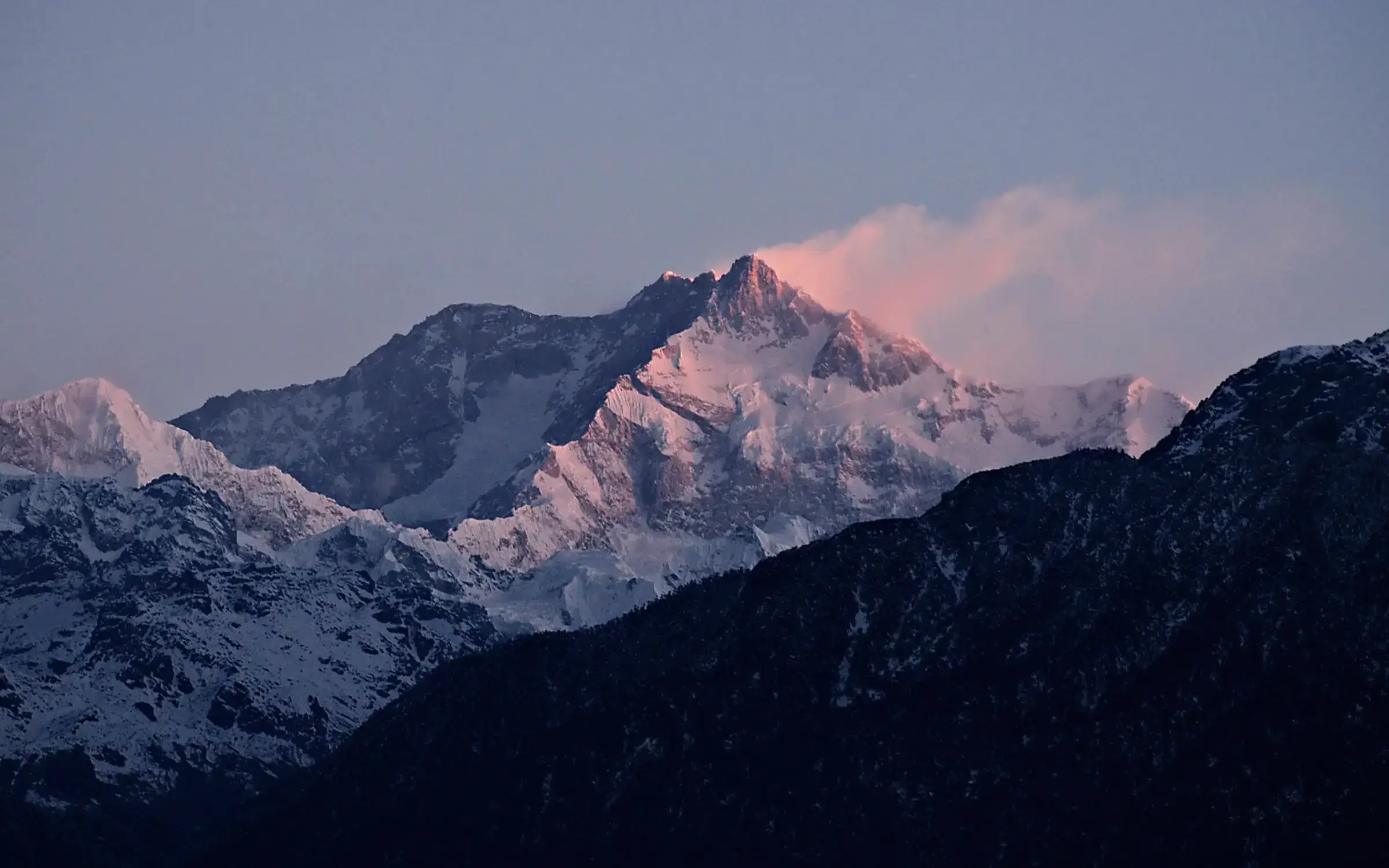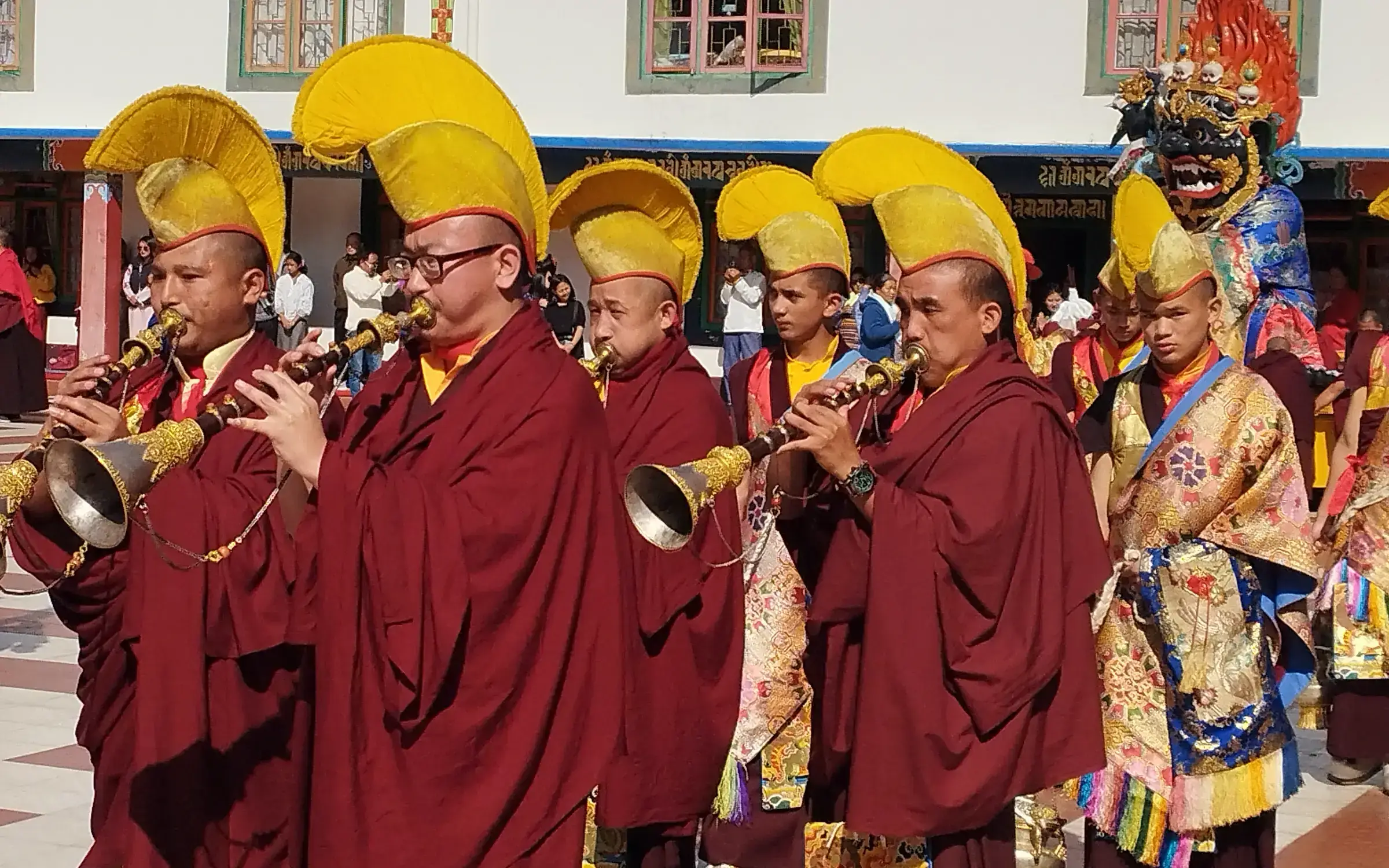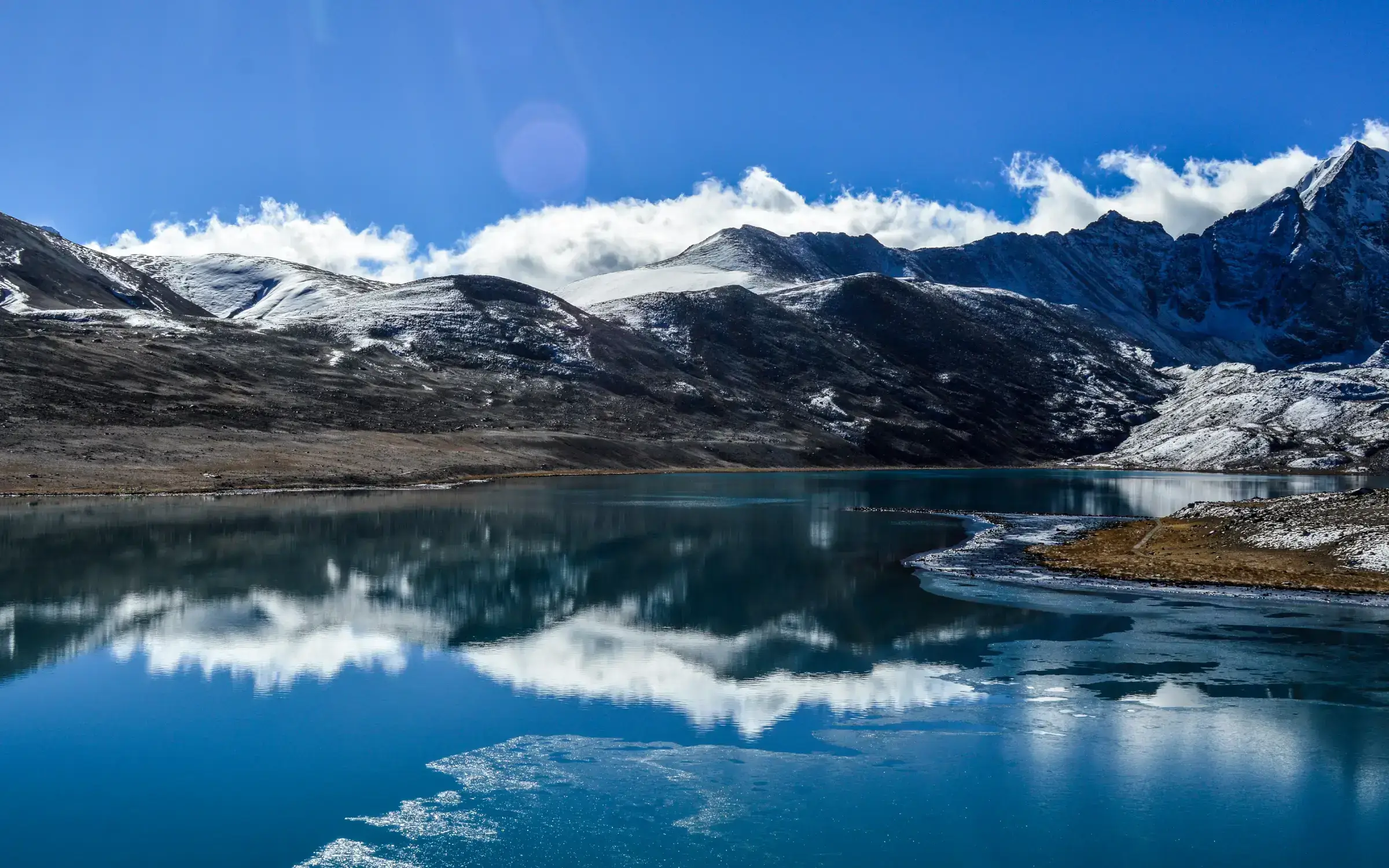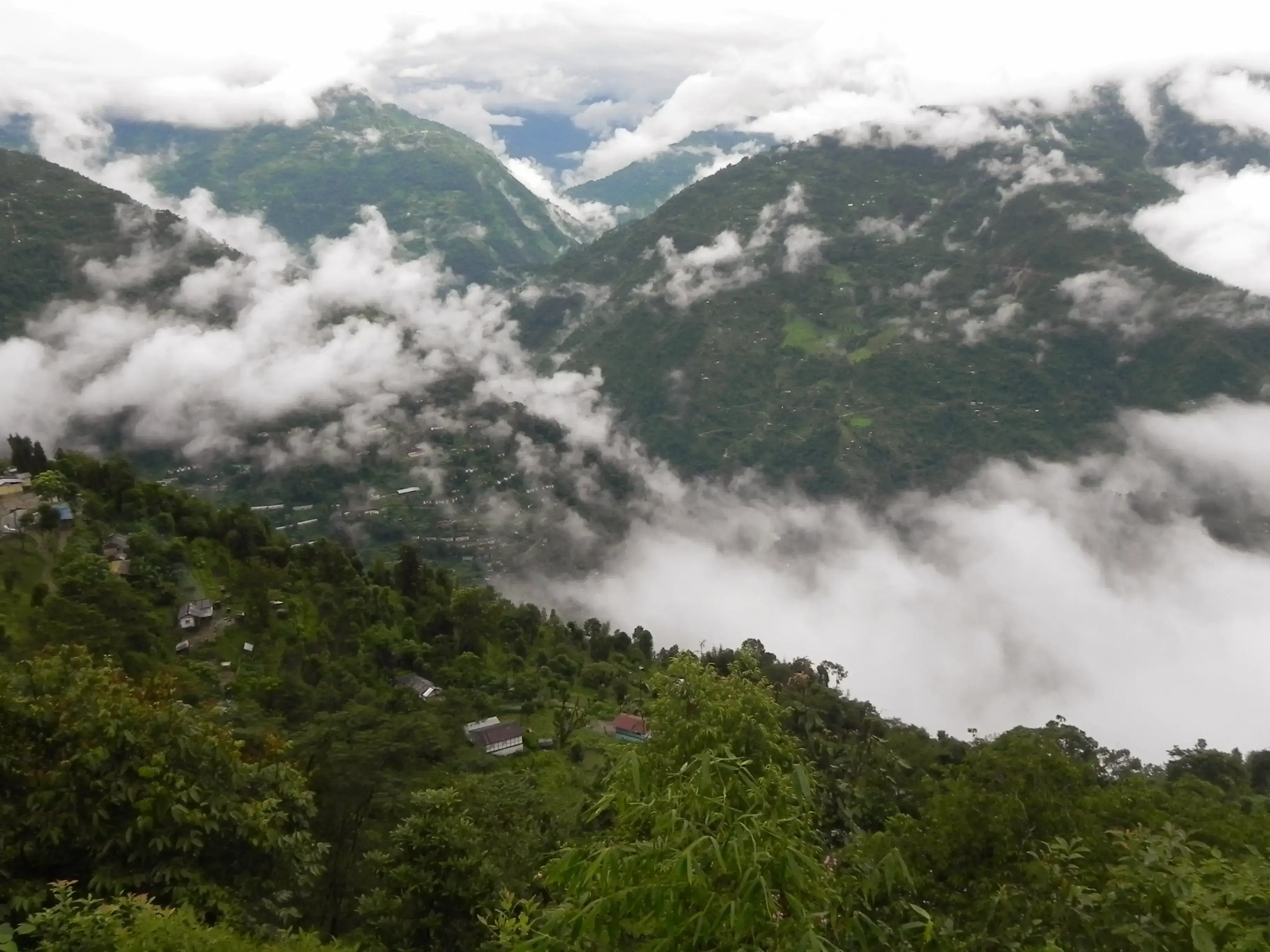Welcome to Sikkim – the Land of Pristine Beauty and Adventure! Sikkim Tourism invites explorers to discover the hidden gem of Northeast India, where nature's splendor awaits. Experience its mystical mountains, majestic monasteries, vibrant festivals, and rich culture, and spend quality, peaceful time in the lap of the Himalayas.
Tourists visiting this small and incredible state will find many stunning panoramas, snow-capped summits and glacial lakes. Sikkim Tourism is a hidden treasure in the eastern Himalayas which provides tourists a rare chance to mix breathtaking beauty with the diversity of flora and fauna. The world's third largest peak, Kanchenjunga, can be seen above the area as a watchtower, surrounding a peaceful and serene area. The charming hill towns of Gangtok, Palling, and Namchi, known for their bustling festivals and celebrations, vibrant markets, and peaceful monasteries, provide the perfect blend of both contemporary and ancient cultures, displaying the unique diversity of Sikkim.
The naturists are invited to explore the rich biodiversity of the state, featuring rare plants and animals in guarded and conserved regions like Kanchenjungha National Park, due to its beautifully preserved ecosystem. The explorers may engage themselves in anything from serene whitewater rafting to thrilling trips and mountain biking.
A journey to Sikkim guarantees to be refreshing and extremely memorable, whether guests are witnessing ancient monasteries, delighting in the local dishes, or just diving in the magnificent and breathtaking scenery of Sikkim.
Also Explore: Popular Tour Packages for Sikkim

| Region | North East India |
| Sikkim Capital | Gangtok |
| Best Time to Visit Sikkim | March and June and from September to November |
| Top Tourist Places in Sikkim | Gangtok, Pelling, Namchi, Lachung, Zuluk, Lachen..etc |
| Top Adventure Tourism Activities in Sikkim | Trekking, River Rafting, Paragliding, Peak Climbing, Mountain Biking…etc |
| Ideal Duration to Visit | 7 - 10 Days |
| Best Time to Visit for Snow | Winter Season |

Having a variety of influences and important moments, Sikkim’s history is a rich and complex trapezium. This small Himalayan Kingdom used to be ruled by the Lepcha people, whose unique customs and style of living helped to define and establish the region’s historical character. The creation of the Namgyal dynasty by Phuntsong Namgyal in the 17th century was an important turning point in history. The establishment of imperial monasteries and the enlargement of the rule throughout this period signified the beginning of the golden age of the kingdom. The future of the kingdom was further affected by its connections with the British India and neighboring Tibet.
Sikkim played a significant part in regional and geographical disputes of colonial India all through the 19th century, resulting in the legalization of the Kingdom’s position as a protectorate under British rule in 1861 with the execution of the agreement of Tumlong with the British. Sikkim was a partially autonomous monarchy after India gained independence in 1947 until 1975 when an election led to its inclusion into the Indian Union.

The Sikkim is a must visit place which offers an is ideal location for guests seeking both excitement and peace of mind because of its commitment to ethical tourism that guarantees that its natural beauty remains intact. The top tourist places in Sikkim are-
Tourists will find Gangtok, the vibrant capital of Sikkim, to have a fascinating combination of contemporary appeal, breathtaking scenery and diverse culture. Located at an elevation of 5, 410 feet of Gangtok, it is a top tourist place in Sikkim which has incredible panoramas of the majestic Kanchenjungha, which is the third highest peak of the world. The city provides an entry point for exploring the Sikkim’s famous tranquil monasteries, lush green valleys, and amazing scenery. Gangtok’s prime spot is the MG Marg, which is a lively walkable blend of market stalls, craft stores and trendy cafes which offers tourists an overview of life and a chance to purchase exclusive and unique gifts.
Several prominent Buddhist sites, which include Rumtek Monastery, among the largest and most significant in Sikkim, are situated in the city. Charm and hospitable, Gangtok offers just the right blend of events and activities to draw tourists and make them make another visit to this fascinating place.
Tourists seeking a peaceful vacation ought to avoid Pelling, which is a small village hidden in the rugged terrain of West Sikkim. This place is an undiscovered treasure which provides an unparalleled blend of stunning scenery, historical significance, and religious peace. At 7,2000 feet in height, Pelling provides a few of the finest amazing vistas of the Kanchenjungha range, particularly at dawn when the sunlight peaks covered with snow come to life. With its lush green scenery, dense forests and flowing waterfalls, especially the renowned Kanchenjunga Falls and the serene Khecheopalri Lake, a sacred and important spot believed to grant wishes, this charming place is heaven for guests who love to dive in nature and are explorers both.
With its typical Sikkimese cottages, charming town roads, and unhurried way of life which contrast with the rush of increasingly commercialized attractions of tourists Pelling continues to preserve its rural charm throughout its increasing popularity.
The little Sikkim hamlet of Namchi has become a well-liked travel destination because of its distinctive fusion of spirituality, scenic beauty, and cultural importance. The majestic Statue of Guru Padmasambhava atop Samdruptse Hill, which provides breathtaking sweeping vistas of the neighboring valleys and mountains, is a popular destination for tourists in the North East India.
A spiritual element is added to the visit by the town's well-known Char Dham pilgrimage site, which has reproductions of India's four main shrines. Travelers looking for both spiritual comfort and the peace and quiet of nature will find Namchi to be the perfect destination thanks to its tranquil tea gardens, colorful floral displays, and verdant surroundings.
Unexplored treasure Zuluk in Sikkim's Eastern Himalayas, also famous as the best place to visit in Sikkim is gaining popularity as a location for daring tourists looking for unique experiences. The hamlet is well-known for its winding roads, particularly the famous Zuluk Loop, which provides breathtaking views of the valleys and mountains in the area.
The magnificent dawn over the snow-capped peaks, which includes the majestic Kanchenjunga, enthralls visitors. Its advantageous position along the ancient Silk Route gives the visit an air of adventure and historical significance. Zuluk's serene setting makes it the perfect place to get away from the masses and take in the unspoiled splendor of the natural world.
Due to its pristine appeal and serene surroundings, Lachen, a charming town in North Sikkim, is becoming more and more popular with travelers. Situated between snow-covered peaks, Lachen is the entry point to the magnificent Gurudongmar Lake, which is among the world's highest lakes. The tranquil environment, the authentic Sikkimese culture, and the stunning vistas of the Himalayan peaks captivate visitors.
Additionally, there are hiking and valley exploration options in the area, including Chopta and Thangu. Lachen is the ideal getaway for nature lovers and adventure seekers alike, providing a really refreshing adventure away from city life with its unspoiled beauty and serene surroundings that makes it a popular tourists attraction in Sikkim.

Depending on the residency of tourists and the regions of the state they want to visit, guests might be required to get a likely entrance permit to have Sikkim tour:
Always check for the latest requirements and updates from official sources or travel agencies before planning your trip, as regulations and processes may change.
At an elevation of 6,153 meters, Stok Kangri ranks as one of the largest and most popular summits for climbing in Ladakh. For climbers who are seeking to conquer their very first Himalayan peak, it's a relatively simple and easy climb.

Sikkim is best visited between March and June and from September to November when the weather is most pleasant and the landscape is at its most vibrant. Due to its location in the Eastern Himalayas, Sikkim experiences a variety of climates that change with the seasons.
Spring and autumn are the best times to explore Sikkim, offering the most comfortable weather and the clearest views of the stunning Himalayan landscape.
Tourists will likely have a wonderful experience in Sikkim, an unexplored gem in the Eastern Himalayas due to its stunning landscape, unique cultural legacy, and distinctive flora and fauna. Sikkim has a lot to offer to everyone, either its bustling and vibrant festival, serene and beautiful monasteries, or the thrilling experience of thrilling over its natural beauty.




